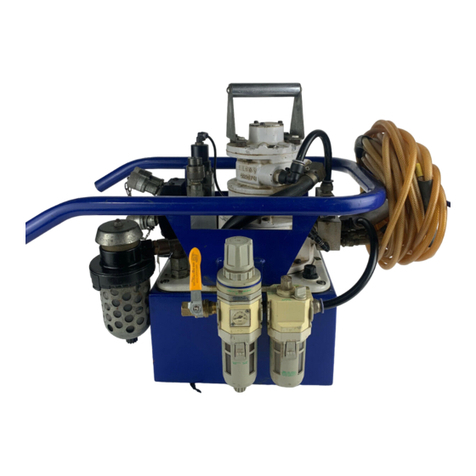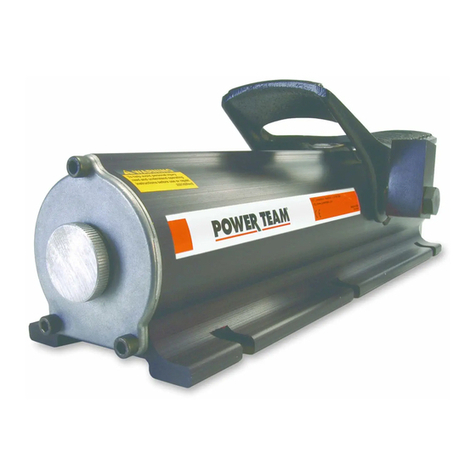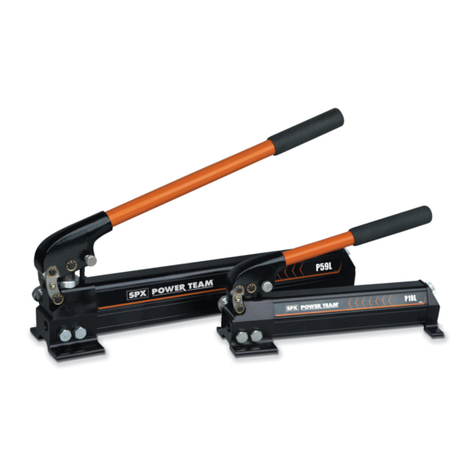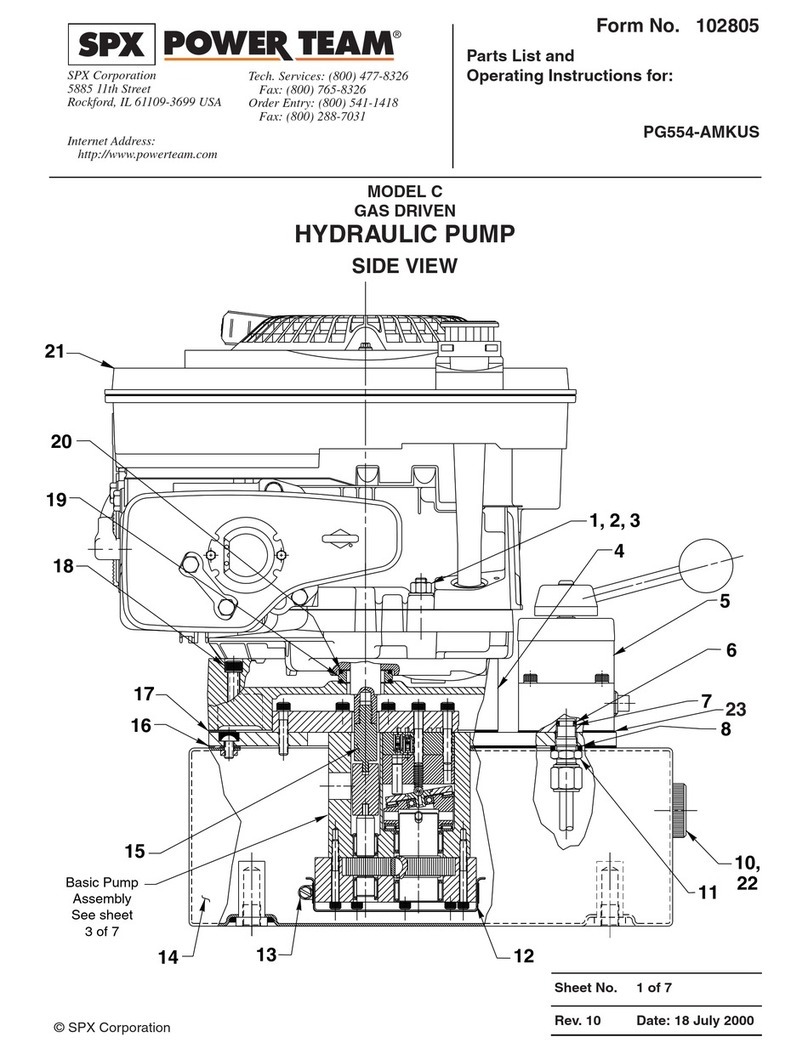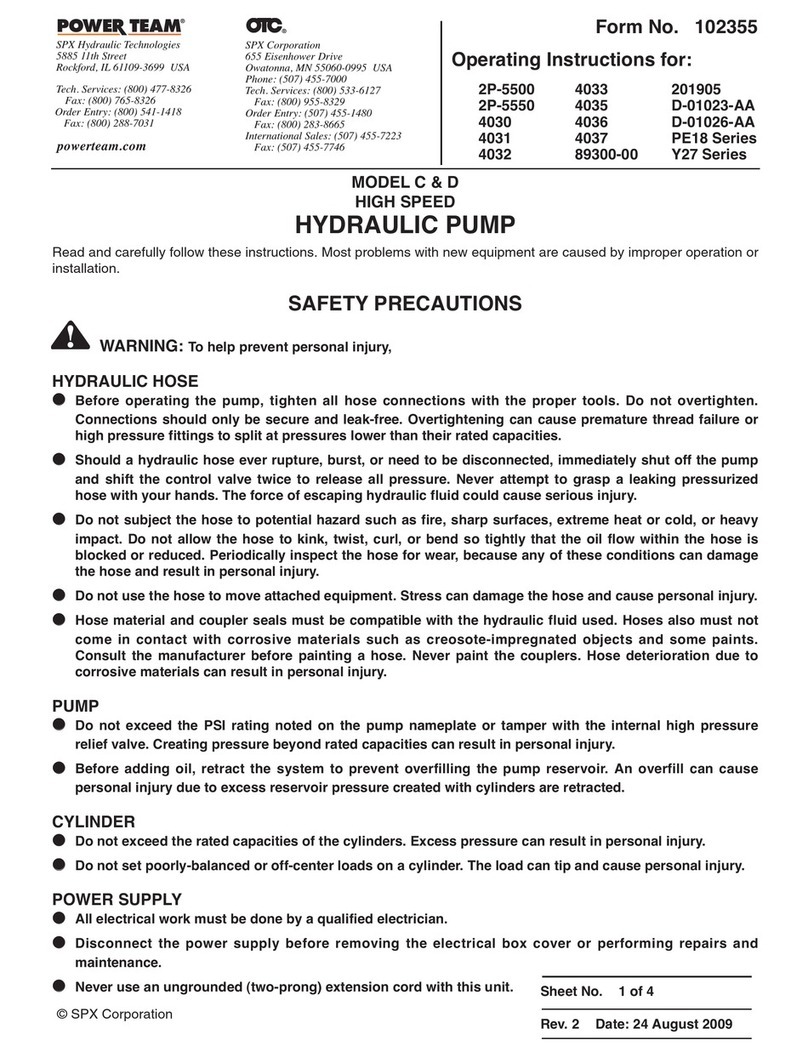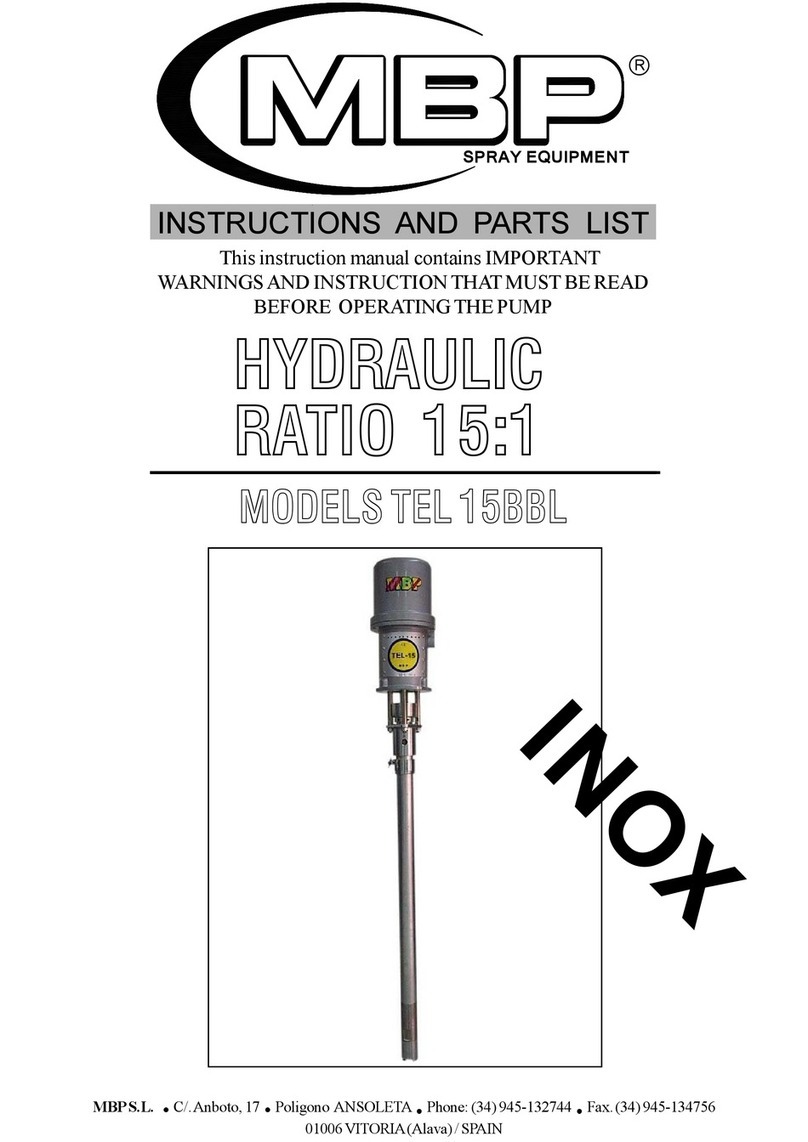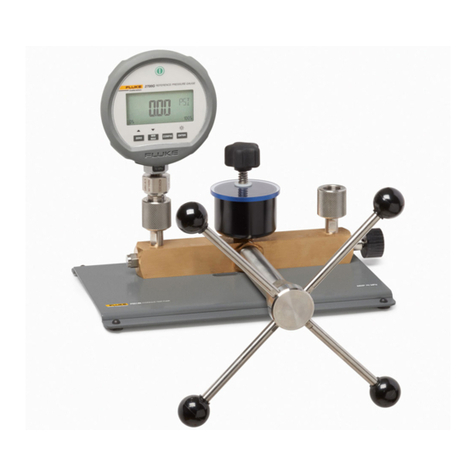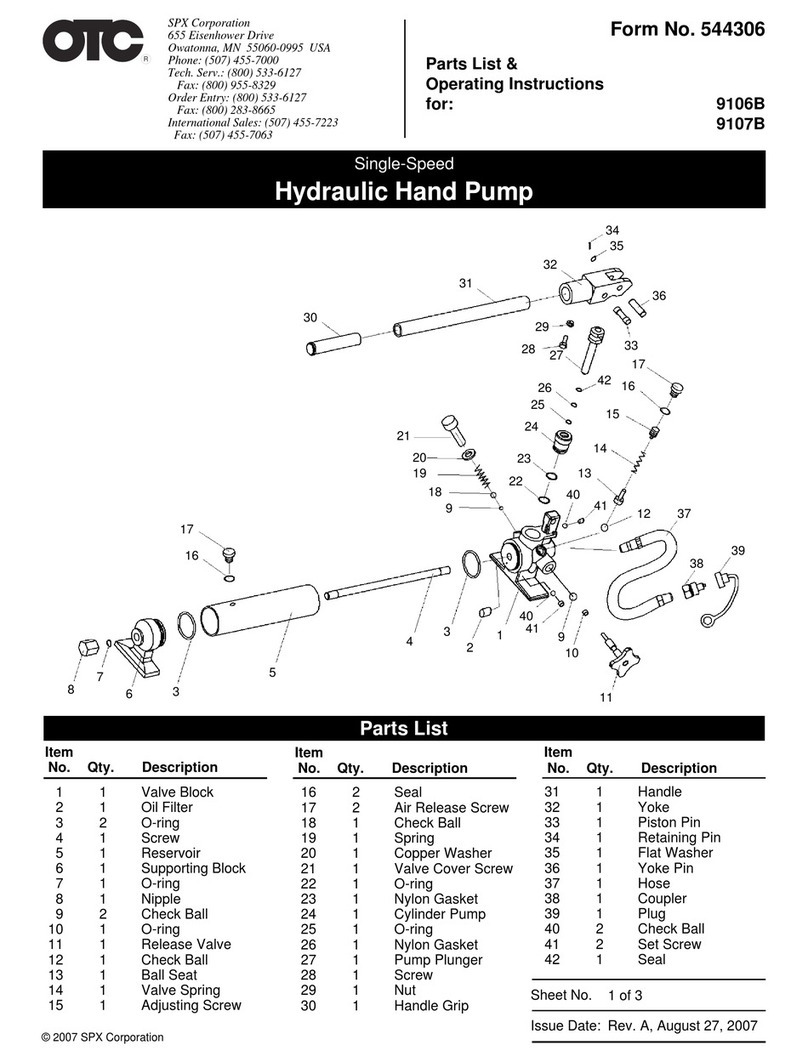SPX POWER TEAM Р12 Series User manual

SINGLE-STAGE AND TWO-STAGE
HYDRAULIC HAND PUMP
Max. Pressure: See Pump Data Plate
Definition: A hydraulic hand pump delivers hydraulic fluid under pressure by directly applied manual effort.
Note: Illustrations depict general pump configurations.
Form No. 102842
Operating Instructions for:
For Use
With
Single-
Acting
Cylinders
(Pump
includes
2-Way
Valve)
Double-
Acting
Cylinders
(Pump
includes
4-Way
Valve)
Order
No.
P12 1 0.069
0.160
0.160
0.662
0.160
0.550
0.130
0.650
0.160
2.600
0.160
2.600
0.160
7.350
0.294
0.650
0.160
2.600
0.160
2.600
0.160
7.350
0.294
1.1
2.6
2.6
10.8
2.6
9.0
2.1
10.7
2.6
42.6
2.6
42.6
2.6
120.5
4.6
10.7
2.6
42.6
2.6
42.6
2.6
120.5
4.6
10000
3000
10000
325
10000
325
10000
1400
10000
325
10000
325
10000
325
10000
1400
10000
325
10000
325
10000
325
10000
700 75
70
145
145
120
140
140
140
90
140
140
140
90
34.0
31.8
65.8
65.8
54.5
63.5
63.5
63.5
40.8
63.5
63.5
63.5
40.8
A 12 197
390
901
901
901
2491
2491
5.7 l
9.5 l
2491
2491
5.7 l
9.5 l
9
20.3
45
45
45
137
137
310
460
137
137
310
460
148
333
738
738
738
2245
2245
5081
7539
2245
2245
5081
7539
5.7 2.6
5.4
7.2
7.8
6.4
11.8
11.8
25.1
24.9
13.1
12.7
25.9
26.3
12.0
15.8
17.2
14.0
26.0
26.0
55.3
54.9
28.8
27.9
57.0
57.9
23.8
55
55
55
152
152
1.5 gal.
2.5 gal.
152
152
1.5 gal.
2.5 gal.
B
B
B
B
B
B
C
D
B
B
C
D
200
700
22
700
22
700
97
700
22
700
22
700
22
700
97
700
22
700
22
700
22
700
1
1
1
2
1
2
1
2
1
2
1
2
1
2
1
2
1
2
1
2
1
2
P23
P55
P59
0.305
0.091 5
1.5 325
10000 400 20 328 36.624.4B
22
700 8.5
98.5 3.8
44.7
1
2
P19
P59F
P157
P159
P300
P460
P157D
P159D
P300D
P460D
Volume & Pressure
Stage Volume per
Stroke
In.3cm3
Maximum
Pressure
psi bar
Handle or
Foot Lever
Effort
Reservoir
lbs. kg Type Oil
Capacity
In.3cm3
Usable Oil
Capacity
In.3cm3
Product
Weight
lbs. kg.
3/8 NPTF oil port(s) on all pumps
0.216
0.054
0.216
0.054
3.5
0.9
3.5
0.9
325
10000
325
10000
125
125
56.7
56.7
508
508
27
27
443
443
4.5
4.5
10.0
10.0
31
31
B
B
22
700
22
700
1
2
1
pop-off
P30F
P30FP
0.550
0.130 9.0
2.1 325
10000 145 65.8 901 45 738 6.414.055B
22
700
1
pop-off
P59FP
P460
P300
P12 P23
P19
P55
P59F
P59FP
P157/P159
64662/64663
P157D/P159D
Table 1 Sheet No. 1 of 4
Rev. 8 Date: 23 Jan. 2001
P30F
P30FP
62072 (See P159)
62087 (See P55)
64122 (See P55)
64215 (See P59)
64372 (See P55)
66463 (See P59)
64662 (See P157)
64663 (See P157)
201338-TID (See P12)
P12 SERIES
P19 SERIES
P23 SERIES
P30F SERIES
P55 SERIES
P59 SERIES
P59F SERIES
P157 SERIES
P157D SERIES
P159 SERIES
P159D SERIES
P300 SERIES
P300D SERIES
P460 SERIES
YM-01 (See P19)

Operating Instructions, Form No. 102842, Back sheet 1 of 4
SAFETY EXPLANATIONS
Two safety symbols are used to identify any action or lack of action that can cause personal injury. Your
reading and understanding of these safety symbols is very important.
DANGER - Danger is used only when your action or lack of action will cause serious human injury or
death.
WARNING - Warning is used to describe any action or lack of action where a serious injury can occur.
IMPORTANT - Important is used when action or lack of action can cause equipment failure, either immediate
or over a long period of time.
Pictogram Definition
Do not remove this component. For service only. Pressure must be released.
WARNING: It is the operator's responsibility to read and understand the following
safety statements,
• Only qualified operators should install, operate, adjust, maintain, clean, repair, or
transport this machinery.
• These components are designed for general use in normal environments. These
components are not specifically designed for lifting and moving people, agri-food
machinery, certain types of mobile machinery or special work environments such as:
explosive, flammable or corrosive. Only the user can decide the suitability of this
machinery in these conditions or extreme environments. Power Team will supply
information necessary to help make these decisions.
• Do not use equipment if damaged, altered, or in poor condition.
• All safety decals must be replaced when unreadable.
These instructions are intended for end-user application needs. Most problems with new equipment are caused by
improper operation or installation. Detailed service repair instructions or parts lists can be obtained from your nearest
Power Team facility.

Operating Instructions Form No. 102842
SAFETY PRECAUTIONS
WARNING: To help prevent personal injury,
• Before operating the pump, all hose connections must be tightened with the proper tools. Do not
overtighten. Connections need only be tightened securely and leak-free. Overtightening may cause
premature thread failure or high pressure fittings to split at pressures lower than their rated capacities.
• Should a hydraulic hose ever rupture, burst, or need to be disconnected, immediately shut off the pump
and shift the control valve twice to release all pressure. Never attempt to grasp a leaking hose under
pressure with your hands. The force of escaping hydraulic fluid could cause serious injury.
• Do not subject the hose to any potential hazard such as fire, extreme heat or cold, sharp surfaces, heavy
impact. Do not allow the hose to kink, twist, curl, or bend so tightly that the fluid flow within the hose is
blocked or reduced. Periodically inspect the hose for wear because any of these conditions can damage
the hose and result in personal injury.
• Do not use the hose to move attached equipment. Stress may damage the hose and cause personal
injury.
• Hose material and coupler seals must be compatible with the hydraulic fluid used. Hoses also must not
come in contact with corrosive materials such as creosote-impregnated objects and some paints.
Consult the manufacturer before painting a hose. Never paint the couplers. Hose deterioration due to
corrosive materials may result in personal injury.
• All components in the hydraulic system must match the maximum pressure rating of the pump.
Pump
• Do not exceed the PSI rating noted on the pump nameplate or tamper with internal high pressure relief
valve. Creating pressure beyond rated capacities may result in personal injury.
• Before adding hydraulic fluid, retract the system to prevent overfilling the pump reservoir. An overfill
may cause personal injury due to excess reservoir pressure created when cylinders are retracted.
• The load must be under operator control at all times.
• Do not connect pump to hydraulic system powered by another pump.
Cylinder
• Do not exceed rated capacities of the cylinders. Excess pressure may result in personal injury.
• Do not set poorly-balanced or off-center loads on a cylinder. The load may tip and cause personal injury.
• Stay clear of lifted loads and keep others away.
• Extensions are not recommended for lifting applications.
SET-UP
Hydraulic Connections
IMPORTANT: Seal all hydraulic connections with a high grade, nonhardening thread sealant. Teflon tape may
also be used to seal hydraulic connections if only one layer of tape is used. Apply the tape carefully, two
threads back, to prevent it from being pinched by the coupler and broken off inside the pipe end. Any loose
pieces of tape could travel through the system and obstruct the flow of fluid or cause jamming of precision-
fit parts.
1. Clean all areas around the fluid ports of the pump and cylinder. Clean all hose ends, couplers, and union ends.
Remove thread protectors from the hydraulic fluid outlets, and connect the hose assembly. Couple hose to
cylinder.
2. The use of a hydraulic pressure or tonnage gauge (not included) is strongly recommended. Remove the pipe
plug from the gauge port of the valve, thread the gauge into this port and seal as noted above.
WARNING: To help prevent personal injury,
• The gauge must have the same pressure rating as the pump and cylinder. Personal injury can result if the
wrong gauge is used.
• Release hydraulic pressure BEFORE removing
or tightening hose couplings. Sheet No. 2 of 4
Rev. 8 Date: 23 Jan. 2001

Operating Instructions, Form No. 102842, Back sheet 2 of 4
OPERATION
The P460 can be operated only in the horizontal position. All other hand pumps can be operated in a horizontal
position or in a vertical position with head pointing downward.
Refer to Table 1 and your pump name plate to determine your style of pump.
IMPORTANT: Figure 1 illustrates
the
normal
drop of handle effort
experienced when all
(except P59)
two-stage pumps shift from
low pressure stage to
high pressure stage.
Two-way Valve
Pumps with a two-way valve are for use with single-acting cylinders.
1. To extend the cylinder, turn the valve knob counterclockwise to a closed (seated) position. Note: Hand tight
only! Work the pump handle up and down to build pressure.
2. To release pressure, open the valve slowly by turning the knob clockwise to control the load.
Four-way Valve
Pumps with a three-position, four-way valve are for use with double-acting cylinders. The hose connection for
extending a cylinder can be made to either port. With the handle in the forward position, the fluid is directed to the top
fluid port. To maintain (hold) pressure, stop the pumping action. When the valve handle is in the center position, fluid
flow is blocked to both ports.
WARNING: The operator should always release the pressure slowly.
PREVENTIVE MAINTENANCE
IMPORTANT: Any repair or servicing that requires dismantling the pump must be performed in a dirt-free
environment by a qualified technician.
Lubrication
Apply lubricant regularly to all pivot and rubbing points.
Use a good grade of No. 10 motor oil or grease. Do not use dry lubricants.
Bleeding Air From the System
Air can accumulate in the hydraulic system during the initial set-up or after prolonged use, causing the cylinder to
respond slowly or in an unstable manner. To remove the air:
1. Position the cylinder at a lower level than the pump, and turn the cylinder rod end down.
2. Extend and retract the cylinder several times without putting a load on the system. Air will be released into the
pump reservoir. Follow the fluid level instructions for your reservoir type to release the air from the reservoir and
top off the fluid supply.
Bleeding Air From The Pump
When the pump is first put into use, or after refilling the pump's reservoir it may be necessary to bleed any trapped air
from the pump. If this is not done the pump will not function properly (will not build pressure or has very spongy
operation).
To bleed air from the pump, turn the pressure control knob counterclockwise (CCW) and operate the pump handle up
and down approximately twenty times. Turn the pressure control knob clockwise (CW) to its full stop position. The
pump should now be bled of air and ready to use.
Handle Effort
Unloading
Pressure
Low Pressure Stage
High Pressure Stage
Figure 1
Pressure
Next
Page
Note: Shaded areas reflect last revision(s) made to this form.

Operating Instructions Form No. 102842
PREVENTIVE MAINTENANCE -CONTINUED
Hydraulic Fluid Level
WARNING: Cylinder(s) must be fully retracted before checking the fluid level. Release all system
pressure before breaking any hydraulic connection in the system.
Check the hydraulic fluid level in the reservoir periodically. Use a funnel with a filter to add hydraulic fluid if needed.
Refer to Table 1 for your reservoir type.
For models with Reservoir Type A: Place the pump in a vertical position with the pump head facing upward.
Unscrew and remove the pump head from the reservoir. The fluid level within the reservoir should come to the
fluid level mark indicated on the reservoir body decal. Before replacing the pump head, visually inspect the o-ring
which seals the pump head/reservoir assembly. Replace this o-ring if it is worn or damaged. Reinstall pump head
to reservoir and tighten securely. Check for leaks.
For models with Reservoir Type B: Remove the filler cap. The
fluid level should come to the bottom edge of the filler hole when
the pump is level and resting horizontally on its base and the
cylinders are retracted (see Figure 2).
For models with Reservoir Type C: Remove the filler cap. The
fluid level should be 1/2 inch (12.7 mm) from the filler hole when
the pump is level and resting horizontally on its base and the
cylinders are retracted.
IMPORTANT: The pump sight gauge indicates the presence of
hydraulic fluid only. It does not determine correct fluid level.
For models with Reservoir Type D: Remove the filler cap. The
fluid level should be 1/2 inch (12.7 mm) from the cover plate when
the pump is level and resting horizontally on its base and the
cylinders are retracted.
Draining And Flushing The Reservoir
Drain, clean and replenish the reservoir with high-grade, approved Power Team hydraulic fluid yearly or more often if
necessary. The frequency of fluid change will depend upon the general working conditions, severity of use and
overall cleanliness and care given the pump.
IMPORTANT: Clean the exterior of the pump first. After draining and flushing the reservoir, drain and clean
the other hydraulic system components (hoses, cylinders, etc.) before connecting them to the pump again.
This will help prevent contaminated fluid from entering the pump.
Refer to Table 1 for your reservoir type.
For models with Reservoir Type A:
1. Unthread and separate the pump head from the reservoir. Drain the reservoir of the used hydraulic fluid.
2. Flush out reservoir with a small amount of clean hydraulic fluid. Clean the pump intake filter.
IMPORTANT: Removing the filter from the pump assembly could result in its breakage. Attempt to clean it
as well as possible with it installed.
3. Refill the reservoir and reassemble the pump head to the reservoir. Tighten securely. Check for leaks.
For models with Reservoir Type B & C:
1. Remove the filler cap. Drain the hydraulic fluid through filler hole.
2. Remove the nut from the tie rod. Separate the reservoir from the pump body. Clean the reservoir and filter.
IMPORTANT: Removing the filter from the pump assembly could result in its breakage. Attempt to clean it
as well as possible with it installed.
3. Reassemble and fill the reservoir with Power Team hydraulic fluid. Replace the filler cap.
For models with Reservoir Type D:
1. Remove the ten screws fastening the reservoir cover to the reservoir, and lift the pump and valve assemblies off.
2. Drain all hydraulic fluid and flush reservoir with a small amount of clean hydraulic fluid.
3. Remove the pump assembly filter, rinse it clean, and reassemble.
4. Refill the reservoir with Power Team hydraulic fluid. Place the pump and
valve assembly (with gasket) on the reservoir, and thread the ten screws.
Tighten securely and evenly.
Figure 2
OIL
LEVEL
OIL
LEVEL
END VIEW
OF P19
PUMPS
END VIEW
Sheet No. 3 of 4
Rev. 8 Date: 23 Jan. 2001

Operating Instructions, Form No. 102842, Back sheet 3 of 4
TROUBLESHOOTING GUIDE
WARNING: To help prevent personal injury, always release pump pressure and disconnect hoses(s)
from pump before making repairs.
Refer to the appropriate pump parts list during trouble-shooting. Repairs must be performed in a dirt-free
environment by qualified personnel familiar with this equipment.
Pump handle can be pushed down
(slowly) without raising the load 1. Inlet checks are not seating
2. Damaged piston assembly or
piston seals leaking
1.* Check for dirt and/or reseat
valve seats
2.* Replace piston assembly and/or
piston seals
Pump handle operates with a
spongy action 1. Air trapped in system
2. Too much fluid in reservoir
1. Position cylinder lower than
pump. Extend and return
cylinder several times. Follow
bleeding instructions.
2. Check fluid level per instructions
Pump handle effort drops
significantly after some pressure
has been obtained
1. This is normal operation on most
two-stage hand pumps
Pump does not reach full pressure 1. Low fluid level in reservoir
2. System components leaking
3. Directional control valve leaks or
not adjusted properly
4. Improperly adjusted relief valve
5. Fluid leaking past inlet or outlet
checks or high pressure piston
seal damaged
1. Check fluid level per instructions
2. Repair or replace as necessary
3.* Reseat, repair, or replace
directional control assembly and
correctly adjust
4.* Readjust
5.* Reseat or repair inlet or outlet
checks or replace high pressure
piston seal
PROBLEM CAUSE SOLUTION
Pump not delivering fluid 1. Low fluid level in reservoir
2. Intake filter is dirty
3. Seats worn and not seating
properly
1. Check fluid level per instructions
2. Remove reservoir and clean
3.* Repair seats or replace pump
body
Pump losing pressure 1. System components leaking
2. Directional control valve leaks or
not adjusted properly
3. Fluid leaking past outlet check
seat(s)
1. Repair or replace as necessary
2.* Reseat, repair, or replace
directional control assembly and
correctly adjust
3.* Check for dirt. Reseat pump
body and/or replace poppet(s) or
ball(s)
Handle rises after each stroke 1. Fluid leaking past outlet check
seat(s) 1.* Check for dirt. Reseat pump
body and/or replace poppet(s)
or ball(s)
*Power Team recommends these hand pump repairs be performed by an Authorized Hydraulic Service Center.

Operating Instructions Form No. 102842
POWER TEAM FACILITIES
Sheet No. 4 of 4
Rev. 8 Date: 23 Jan. 2001
AUSTRALIA
7 Expo Court
Mount Waverley
Victoria 3149
Australia
Tel: 61 (3) 95628800
FAX: 61 (3) 95628080
E-mail:
BRAZIL
Av. N Sra. do Sabará, 4901
São Paulo, SP 04447-021
Brasil
Tel: 55 (11) 5611-4177
FAX: 55 (11) 5611-2793
EUROPE
Klarenanstelerweg 5 D
6468 EP Kerkrade
Netherlands
Tel: 31 (45) 5678877
FAX: 31 (45) 5678878
E-mail: [email protected]
FAR
EAST
19 Joo Koon Road
Singapore 628978
Singapore
Tel: (65) 265-3343
FAX: (65) 265-6646
E-mail:
JAPAN
5-5-53 Minowacho
Kohoku-Ku, Yokohama,
Kanagawen 223-0051
Japan
Tel: 81 (45) 562-7700
FAX: 81 (45) 562-7800
KOREA
So-Anyang P.O. Box 50
Kyounggi-Do
Korea 430-600
Tel: 82-31-391-0209
FAX: 82-31-396-5373
E-mail: [email protected]
UNITED
STATES
SPX Corporation
2121 West Bridge Street
P.O. Box 993
Owatonna, MN 55060-0993
USA
Telephone: 1-507-455-7100
Cust. Service/Order Entry
Tel: 1-800-541-1418
FAX: 1-800-288-7031
E-mail:
pwrteam@fluidpower.spx.com
Technical Services
Tel: 1-800-477-8326 or
1-507-455-7775
FAX: 1-800-765-8326 or
1-507-455-7160
International Sales:
Tel: 1-507-455-7150
FAX: 1-507-455-7122
For more information, Internet address: http://www.powerteam.com (or) http://www.hytec.com
CERTIFIED

EC Declaration of Incorporation
as defined by
European Communities Directive 89/392/EEC, Annex II(B)
MANUFACTURER’S NAME:
MANUFACTURER’S ADDRESS: 2121 West Bridge Street Telephone: 507-455-7100
Owatonna, Minnesota 55060 Fax: 507-455-7122
USA
TYPE OF EQUIPMENT: SINGLE-STAGE and TWO-STAGE HYDRAULIC HAND PUMP.
ORDER NUMBER OR PART NUMBER: P12 Series, P19 Series, P23 Series, P30F Series,
P300 & P300D Series, P157 & P157D Series, P159 & P159D Series, P460 Series,
P55 Series, P59 & P59F Series.
Part numbers which start with the letter "Q" and contain the number listed above.
APPLICATION OF EC COUNCIL DIRECTIVE(S): 89/392/EEC as amended by 91/368/EEC, 93/44/EEC,
and 93/68/EEC.
STANDARD(S) TO WHICH CONFORMITY IS DECLARED: EN292-1 and EN292-2.
I, the undersigned, hereby declare that the equipment specified above conforms to the above
European Communities Directive(s) and Standard(s). This product is not to be put into
service until the machine has been declared in conformity with the provisions of the
European Communities Directive(s).
PLACE: Owatonna, Minnesota USA ________________________________________
(Signature)
DATE: Rev. 16 May 2000 Michael S. O’Brien
(date / month / year) Director Quality / Technical Services
Appendix to 102842
Churchill Way, High March
Daventry, Northants NN11 4NF
United Kingdom
Telephone: 44 (0) 1327 303495
Fax: 44 (0) 1327 871586
Klarenanstelerweg 5D
6468 EP Kerkrade
Netherlands
Telephone: 31 (45) 5678877
Fax: 31 (45) 5678878
This manual suits for next models
32
Table of contents
Other SPX POWER TEAM Water Pump manuals
Popular Water Pump manuals by other brands
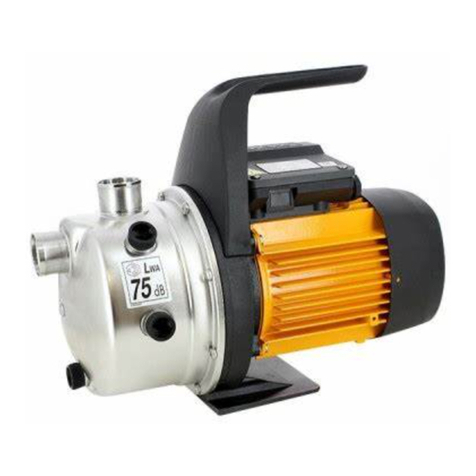
Espa
Espa DELTA Series instruction manual

SOLIDSVAC
SOLIDSVAC SV20-SP Operation manual

GORMAN-RUPP
GORMAN-RUPP AMT 370B-98 Specifications information and repair parts manual
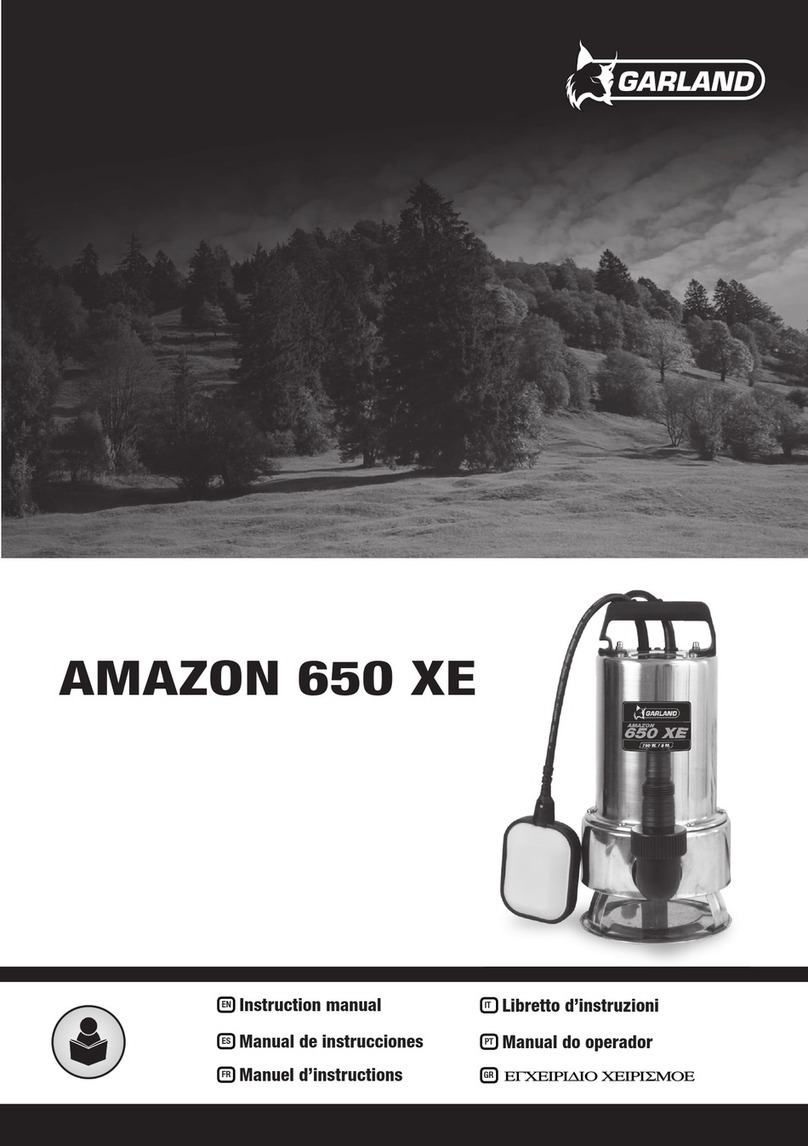
Garland
Garland AMAZON 650 XE instruction manual
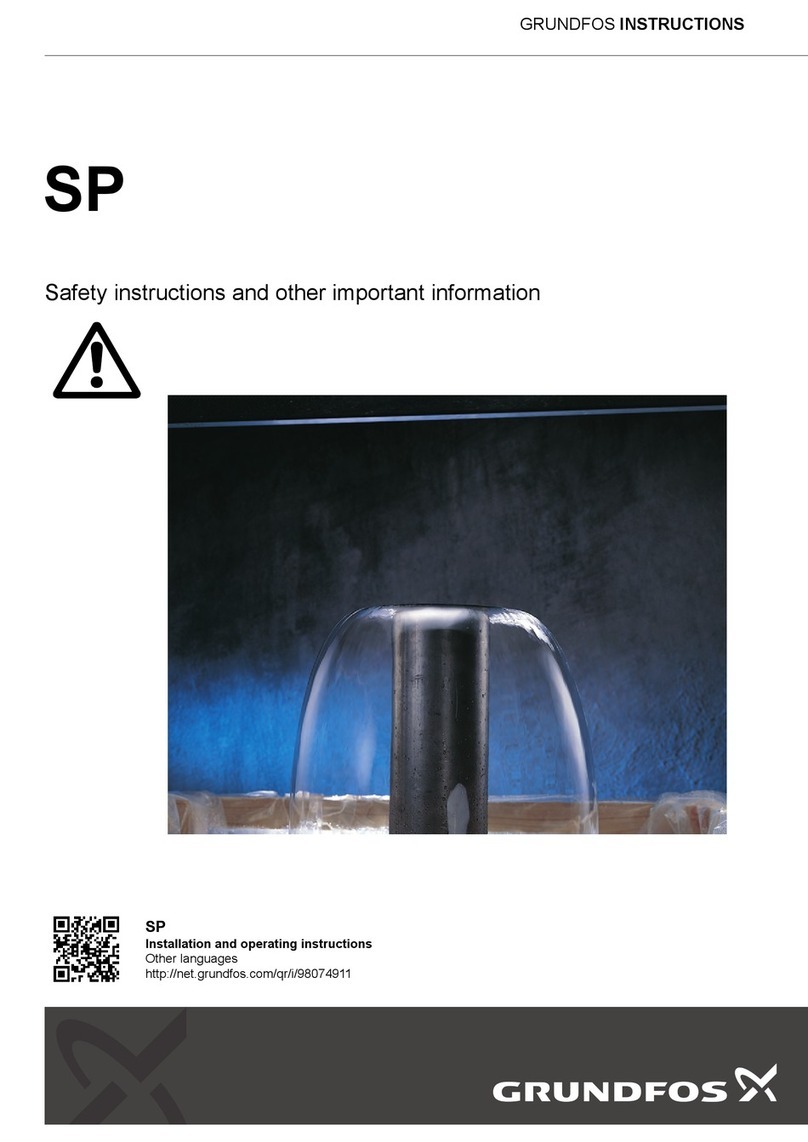
Grundfos
Grundfos SP Safety instructions and other important information
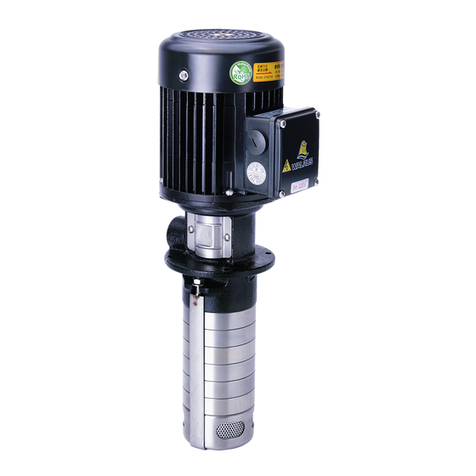
Walrus
Walrus TPK Series instruction manual
